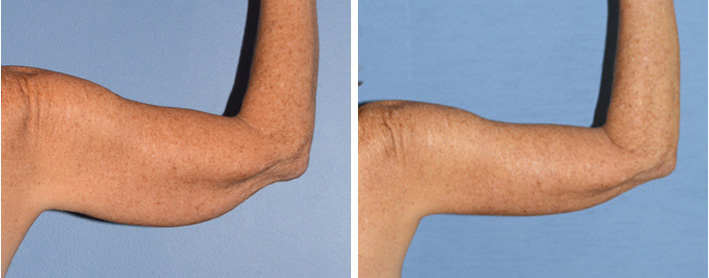Breast Implant Complications Rippling Rupture Capsular Contracture
By University of New York Trained, Contributor to Multiple Scientific Articles, Arnold P. Gold Foundation & Theodore C. Jewitt M.D. Goldstar Awarded, & Bellevue's Plastic Surgeon Dr Rikesh Parikh MD
Click here to see our Breast Augmentation Video by Dr. Parikh
Breast Implant Local Complications
Rupture
Breast Implants can rupture a variety of ways, some may be spontaneous or by trauma. Both saline and silicone (gel) implants can rupture.
Silicone (gel) Implant Rupture.
The newer generation silicone implants have improved technology in the gel filler and barrier or shell of the implant. Rupture can still occur they may be subtle or rupture that occur within the implant with no frank leak of gel to the surrounding breast. Some of the gels are more cohesive meaning they are more “sticky” like a “gummy bear” where even with severe rupture the gel still maintains a good shape and can minimize silicone leakage into the breast. Silicone implant ruptures can be silent or undetectedclinically by the patient. These can be detected best by MRI where a “linguine sign” may be noted. If an implant shows evidence of rupture it should be replaced. The FDA recommends a MRI 3 years after silicone implant placement and every 2 years thereafter to monitor for silent ruptures.
Saline Implant Rupture
Saline (salt water) implants can rupture. Usually these are clinically detectable by noticing a size difference on the ruptured side. The leaks can be slow or fast. The saline is absorbed by the body and generally has no adverse effect. If a saline implant has ruptured it should be replaced.
Our plastic surgeon will go over in more detail regarding rupture of breast implants during your consultation for primary breast augmentation or breast revision if a rupture has occurred.
Need for Revision or Reoperation Surgery
Revision or reoperation can occur with breast augmentation. The most common indication for revision surgery is size change of the implant. Other reasons for revision include malposition, rotation or bottoming out of the implant. Revision surgery can involve lifting the breast tissue (mastopexy), treating asymmetry between the breasts, removal of the implants, or removal of the implants and exchange. Many techniques can be employed in revision surgery such as fat transfer or the use of mesh (acellular dermal matrix ADM)
Capsular Contracture
Capsular Contracture involves the formation of “scar tissue” It is normal for the body to form scar tissue or fibrosis around foreign bodies placed in the tissue. The body reacts to the implant by forming a capsule around it. This is a normal response. However sometimes that capsules can contract or become constricting around the implant which pushes on the implant and can result in deformation of the breast or pain. Capsular contracture can be treated different ways ranging from capsulotomy (cutting the capsule) to capsulectomy (removing the capsule). Capsular contracture may or may not recur after treatment.
There are 4 grades of capsular contracture (Baker Scale)
Grade I —no visible or palpable changes, breast looks and feels normal
Grade II — no visible changes, but the breast is mildly firm and the implant can be felt
Grade III — visible changes deformity, moderately firm and the implant can be felt
Grade IV — visible changes deformity worse, hard, tenderness and pain
Rippling
The term “Rippling” in breast augmentation refers to lines or wrinkles seen on the breast mound. This is commonly due to lack of soft tissue coverage over the implant. It can occur with either saline or silicone gel implants. The capsule around the implant is adherent to the underlying soft tissue of the breast traction from the implant pulls on the capsule which pulls on the soft tissue and skin. This is different from stretch marks or striae which can be seen after breast augmentation from excessive stretch on the skin envelope.
Malposition (Rotation of Implant)
Implants can move within the breast pocket created. Malposition is less common with round implants since the implant is circular in shape and equal in base dimension. Shaped (anatomic teardrop) implants on the other hand have different height vs width dimensions. Therefore if the implants rotate it will show deformity of the breast. Make sure that your plastic surgeon has experience with shaped implants because of the technical issues (pocket dissection) that can arise with these implants.











Philip Young MD, Aesthetic Facial Plastic Surgery PLLC






